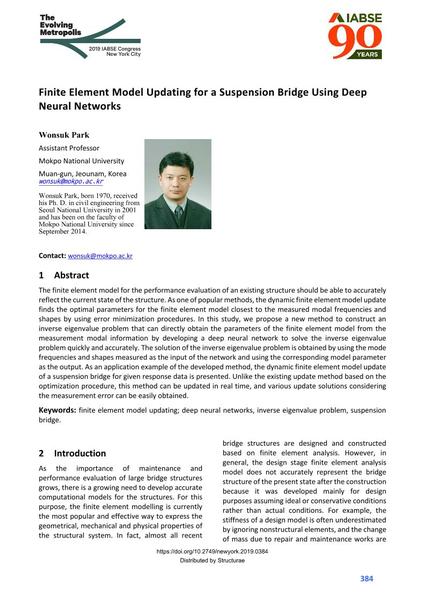Finite Element Model Updating for a Suspension Bridge Using Deep Neural Networks

|
|
|||||||||||
Bibliografische Angaben
| Autor(en): |
Wonsuk Park
|
||||
|---|---|---|---|---|---|
| Medium: | Tagungsbeitrag | ||||
| Sprache(n): | Englisch | ||||
| Tagung: | IABSE Congress: The Evolving Metropolis, New York, NY, USA, 4-6 September 2019 | ||||
| Veröffentlicht in: | The Evolving Metropolis | ||||
|
|||||
| Seite(n): | 384-389 | ||||
| Anzahl der Seiten (im PDF): | 6 | ||||
| DOI: | 10.2749/newyork.2019.0384 | ||||
| Abstrakt: |
The finite element model for the performance evaluation of an existing structure should be able to accurately reflect the current state of the structure. As one of popular methods, the dynamic finite element model update finds the optimal parameters for the finite element model closest to the measured modal frequencies and shapes by using error minimization procedures. In this study, we propose a new method to construct an inverse eigenvalue problem that can directly obtain the parameters of the finite element model from the measurement modal information by developing a deep neural network to solve the inverse eigenvalue problem quickly and accurately. The solution of the inverse eigenvalue problem is obtained by using the mode frequencies and shapes measured as the input of the network and using the corresponding model parameter as the output. As an application example of the developed method, the dynamic finite element model update of a suspension bridge for given response data is presented. Unlike the existing update method based on the optimization procedure, this method can be updated in real time, and various update solutions considering the measurement error can be easily obtained. |
||||
| Stichwörter: |
Hängebrücke
|
||||

